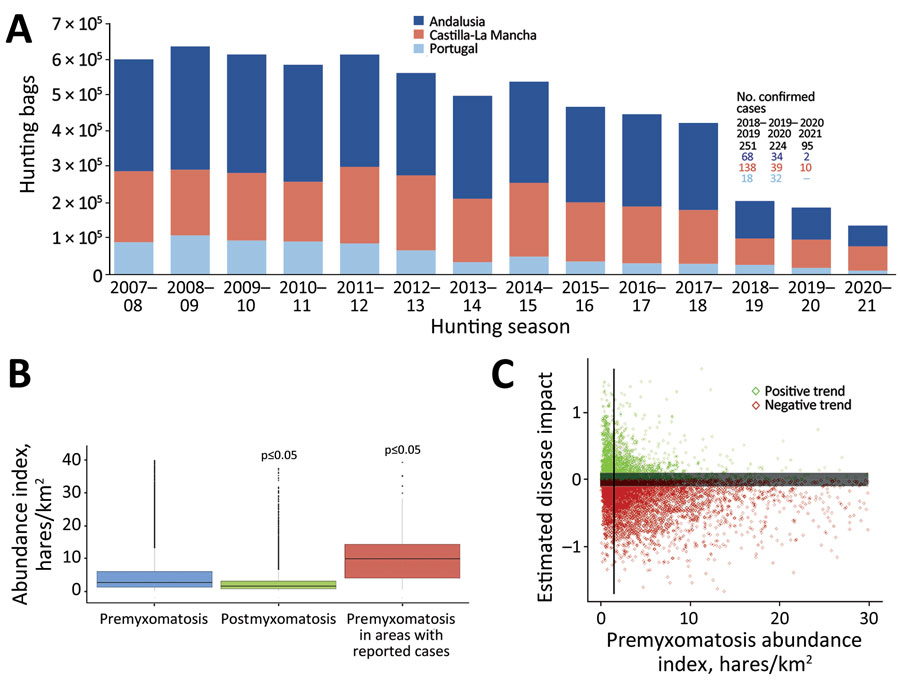Volume 30, Number 6—June 2024
Research Letter
Effect of Myxoma Virus Species Jump on Iberian Hare Populations
Figure

Figure. Evidence of the effect of myxomatosis outbreaks on Iberian hare (Lepus granatensis) populations and the link to the abundance index, in the Iberian Peninsula, after the initial species jump in 2018. A) Temporal evolution of the hunting yields from 2007–08 to 2020–21, along with the number of confirmed myxomatosis cases per hunting season, in the studied regions. B) Comparison between the average overall abundance index (hunted hares/km2) in the premyxomatosis period versus the abundance index estimated for the postmyxomatosis period and the average overall abundance index versus the premyxomatosis period in hunting areas with reported outbreaks. C) Correlation between the estimated effect of myxomatosis (calculated as the difference between global and pre-myxomatosis trends) and the pre-myxomatosis hare abundance index. The vertical line represents the premyxomatosis abundance index threshold (1.5 hunted hares/km2) from which most populations were negatively affected by disease. The dark gray buffer zone (trend values between −0.1 and 0.1) comprises hunting grounds excluded to account for the uncertainty of a trend proximate to zero.